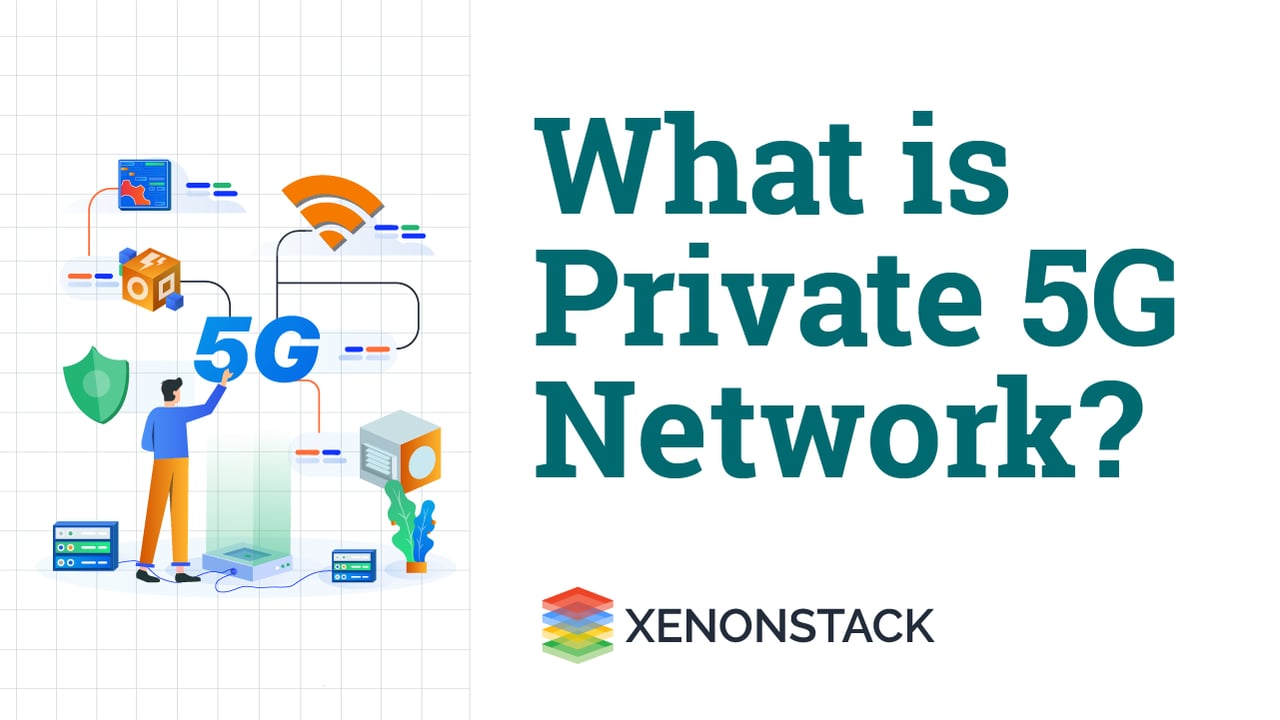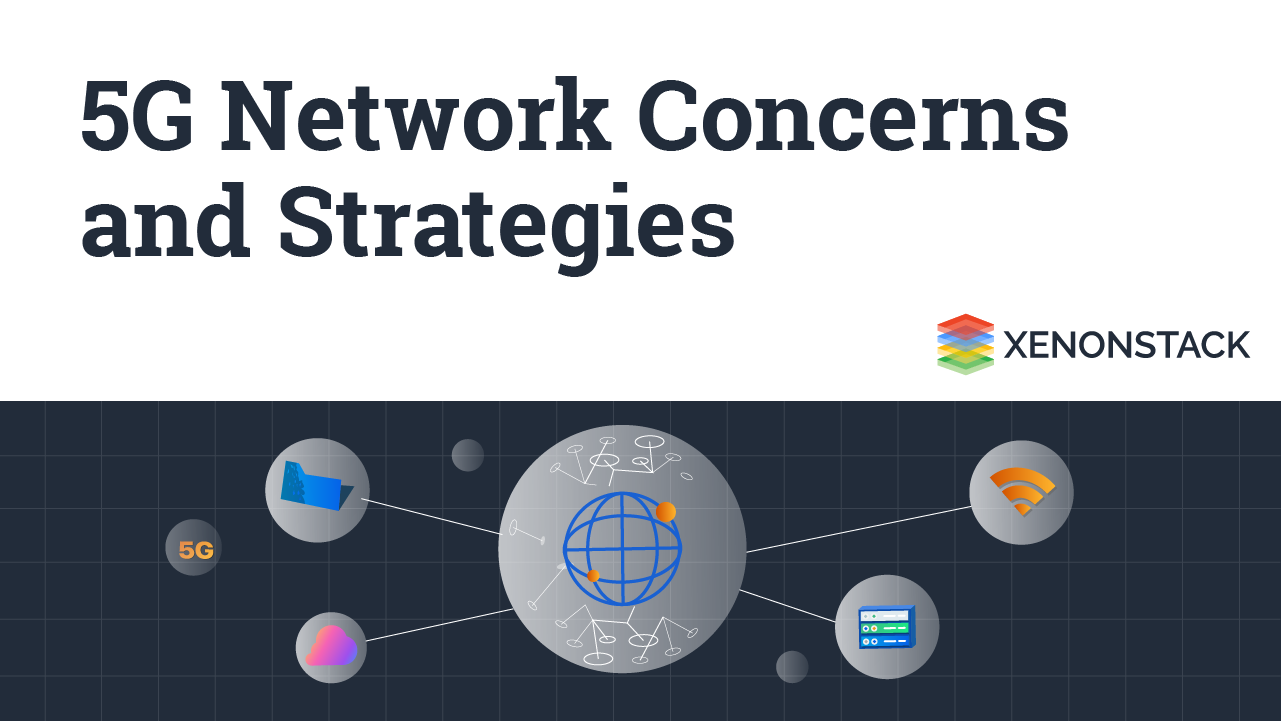
In a world where connectivity is at the scope of everything we do, the uniqueness of 5G technology has revolutionized the way we can communicate and interact with the digital world. Meanwhile, 5G networks are widely available through major telecommunications providers, and there is growing fame in private 5G networks.
These networks offer companies and individuals greater security, control, and customization options. In this informative blog, we will deep dive into the world of private 5G networks and explore the steps to build your own 5G network for enhanced connectivity and performance.
What is a Private 5G Network and How It Works?
A private 5G network is essentially a local, standalone wireless network that operates on the 5G spectrum. It is not connected to or reliant on public cellular networks operated by telecommunications providers like Verizon, AT&T, or T-Mobile. Instead, it functions independently, giving you complete control over its infrastructure and management.
If you're looking to build your own 5G network, you gain the ability to customize it according to specific business or operational needs. Private 5G networks are gaining popularity across various industries, including manufacturing, healthcare, logistics, and even in smart cities. They are used to provide high-speed, low-latency connectivity for critical applications, IoT (Internet of Things) devices, and mission-critical operations.
Why You Should Build a Private 5G Network
There are several compelling reasons to consider building your own 5G network:
Control and Customization
With a private 5G network, you have full control over network security protocols, architecture, and quality of service. This level of control allows you to build your own 5G network tailored to your specific needs.
Enhanced Security
Private 5G networks are not accessible to the public, reducing the risk of cyber-attacks and unauthorized access. This makes them suitable for industries with stricter security requirements.
Low Latency
5G technology offers ultra-low latency, making it ideal for applications that demand real-time data transfer, such as autonomous vehicles and remote surgeries.
Coverage in Remote Areas
When you build your own 5G network, you can deploy it in remote locations where public networks might be unreliable or unavailable.
Scalability
Private networks can easily scale to accommodate increasing demands, making them suitable for growing businesses.
Now that you understand the benefits of a private 5G network let's explore how to build your own 5G network step by step.
Step-by-Step Guide: How to Build Your Own 5G Network
Determine Your Requirements
Before you build your own 5G network, it's important to define the requirements and objectives. Consider factors such as the size of the coverage area, its impact on the environment, the number of connected devices, the required data bandwidth, and any specific use cases. The network's design will depend heavily on these factors.
Spectrum Licensing
To build your own 5G network, you'll need access to the 5G spectrum. Licensing requirements vary by country and region, so it's essential to research and acquire the necessary licenses and permissions. This step is important to ensure your network operates legally and without any interference.
Network Infrastructure
Building a private 5G network requires a robust infrastructure. Here are the key components you'll need:
-
Radio Access Network (RAN): RAN includes antennas and base stations that connect your devices to the 5G network.
-
Core Network: Manages data traffic, routing, and security. You can build your own 5G network core or partner with a third-party provider.
-
Backhaul and Transport: Ensure reliable data transfer between RAN and core network components. Fiber-optic cables are commonly used for this purpose.
-
Edge Computing: Depending on your use case, you might need edge computing resources to process data locally, reducing latency.
Select Hardware and Equipment
Choose hardware and equipment that align with your network's requirements. Work with reputable vendors who can provide you with the necessary RAN and core network components. Ensure that the equipment is 5G-ready and supports the spectrum you've licensed.
Network Design and Deployment
Design your network architecture based on your requirements and available hardware. This step involves planning the placement of antennas, base stations, and other equipment to provide optimal coverage and performance. Deploy your network components according to your design. This often involves physical installation and configuration of equipment. Proper testing and optimization are crucial to ensure everything works as expected.
Security Measures
Security should be a high priority when you build your own 5G network. Implement authentication, encryption, and access control measures to protect the network from cyber threats. Regularly update and patch the network's security infrastructure to stay ahead of potential vulnerabilities.
Network Management and Monitoring
Network management and monitoring tools will be needed to maintain constant performance. This kind of tool allows for monitoring and troubleshooting issues, network traffic, and optimizing resource allocation. Consider using network management software.
Compliance and Regulations
Stay up-to-date with regulations and compliance standards related to building your own 5G network. Compliance is essential for legal and security reasons, especially if your 5G network handles sensitive data or operates in a regulated industry.
Testing and Optimization
Before fully deploying your private 5G network, conduct extensive testing to ensure it meets your performance and reliability requirements. Test for factors like latency, signal strength, and data throughput. Make necessary adjustments and optimizations based on test results.
Real-World Applications: Use Cases of Private 5G Networks
Manufacturing and Industry 4.0
-
Private 5G networks can enable smart factories by connecting IoT devices and machines. This facilitates real-time monitoring, predictive maintenance, and process automation, leading to increased efficiency and reduced downtime. If you're looking to build your own 5G network, it can provide a secure and high-performance solution for industrial automation.
Healthcare
-
In healthcare, private 5G networks support telemedicine, remote surgeries, and the seamless sharing of medical data. These networks can save lives by providing high-speed, low-latency connections in critical situations. Organizations planning to build their own 5G network can enhance data security and ensure uninterrupted connectivity for critical healthcare applications.
Logistics and Warehousing
-
Private 5G networks enhance logistics and supply chain operations through real-time tracking and optimization. They enable autonomous vehicles, drones, and robotics to operate efficiently in warehouses and distribution centers. Businesses looking to build their own 5G network can benefit from improved operational efficiency and better control over connectivity.
Smart Cities
-
Private 5G networks can serve as the backbone for smart city initiatives. They enable connected infrastructure, traffic management, and public safety applications, making cities more efficient and sustainable. Governments and enterprises aiming to build their own 5G network can ensure reliable, city-wide connectivity for essential public services.
Entertainment and Events
-
In large-scale events or entertainment venues, private 5G networks can provide high-speed internet access to attendees and support interactive experiences like augmented reality (AR) and virtual reality (VR). If event organizers choose to build their own 5G network, they can deliver seamless connectivity, enhance audience engagement, and improve overall event management.
Challenges & Emerging Trends in Private 5G Adoption
While private 5G networks offer substantial advantages, they come with challenges
-
Cost of Deployment: Building and maintaining a private 5G network can be expensive, particularly for small and medium-sized businesses. However, the benefits often outweigh the costs in terms of increased efficiency and productivity.
-
Spectrum Availability: Spectrum availability varies by region and is subject to regulatory constraints. Ensuring access to the necessary spectrum can be a hurdle for private network deployment.
-
Interoperability: Ensuring that your private 5G network can seamlessly integrate with other networks and technologies is crucial for long-term success. Interoperability standards are still evolving. As for future trends, we can expect.
Is Building a Private 5G Network Right for You?
Building a private 5G network is a complex undertaking, but it offers unprecedented control, security, and customization options for businesses and individuals. By following the steps outlined in this guide and staying informed about evolving technologies and regulations, you can build your own 5G network that meets your specific needs and positions you at the forefront of connectivity in the digital age.
Whether you're enhancing industrial operations, supporting cutting-edge IoT applications, or simply seeking a more secure and reliable network, choosing to build your own 5G network can empower you to achieve your goals with greater flexibility and performance.
Next Steps in Getting Started with Your Private 5G Network
Talk to our experts about implementing a private 5G network tailored to your business needs. Learn how industries and different departments leverage private 5G infrastructure to enhance connectivity, security, and operational efficiency. Build your own 5G network to automate and optimize IT support and operations, improving reliability, scalability, and responsiveness.



